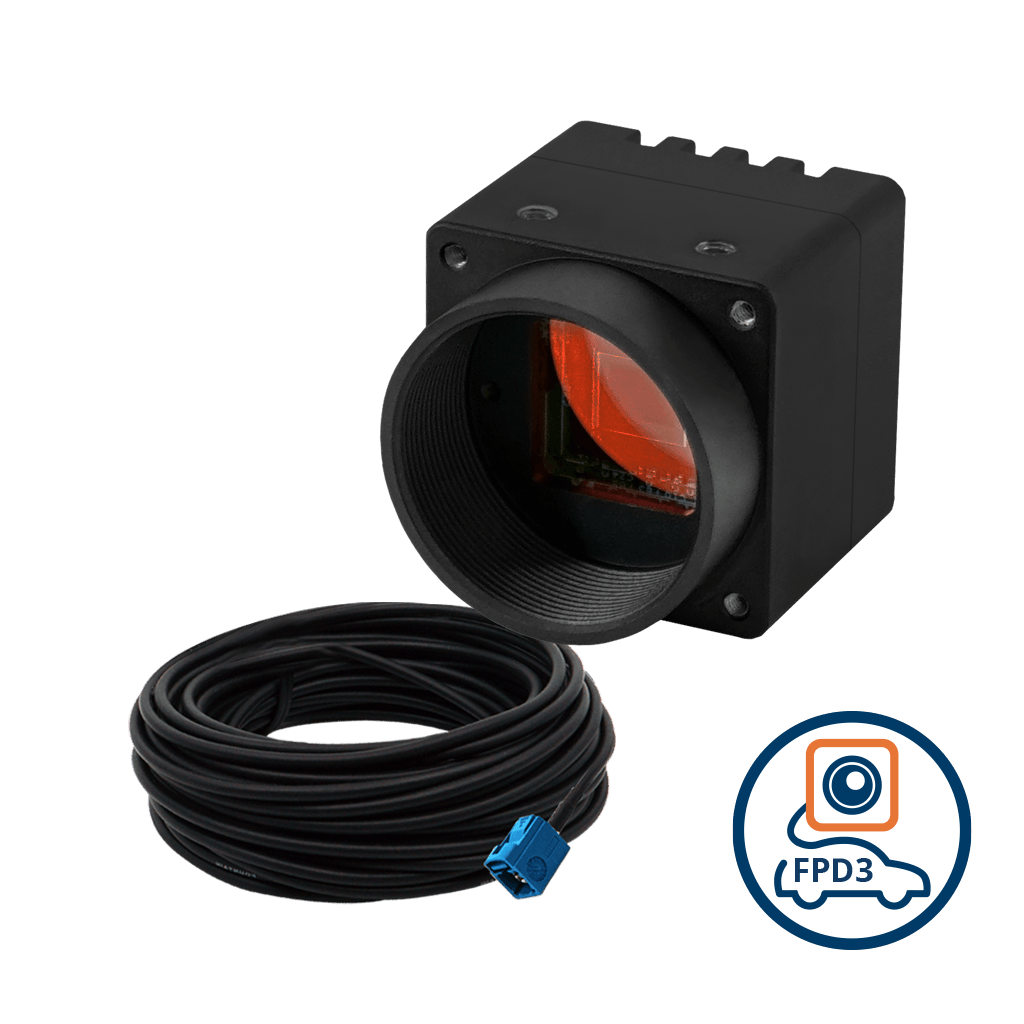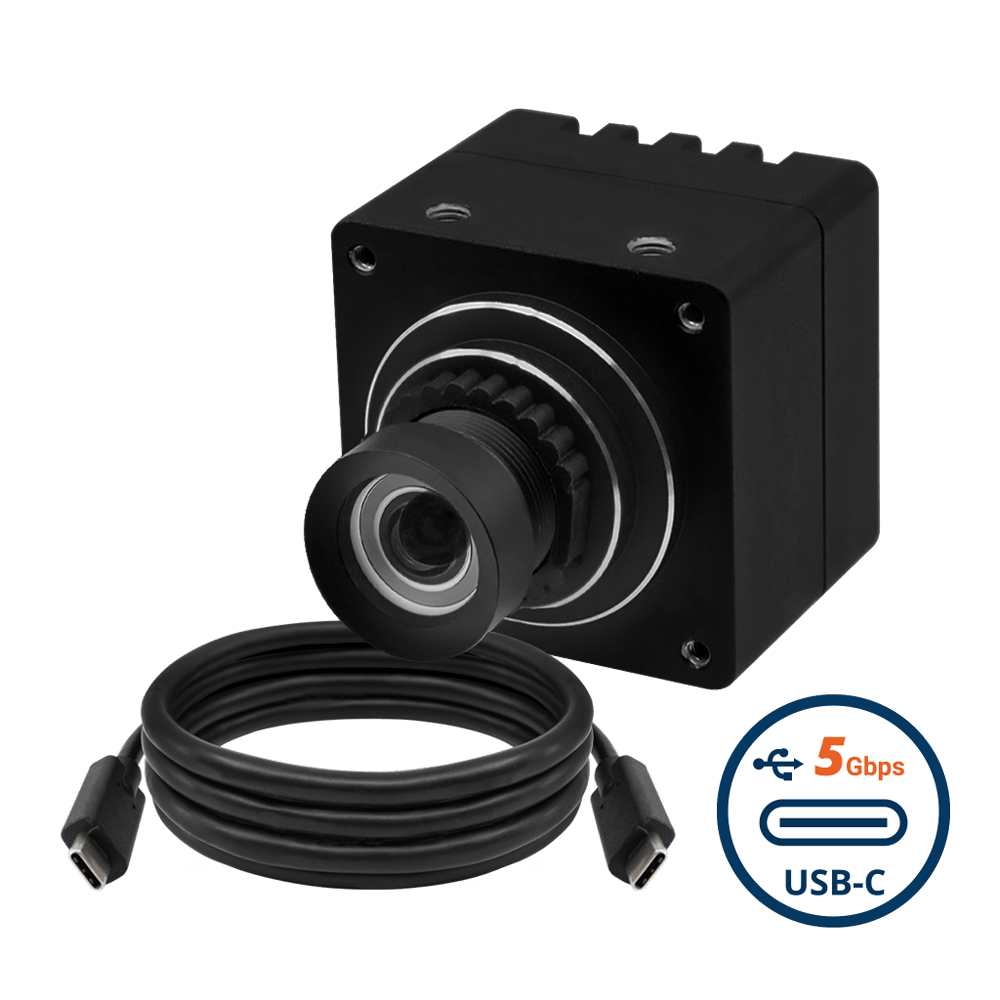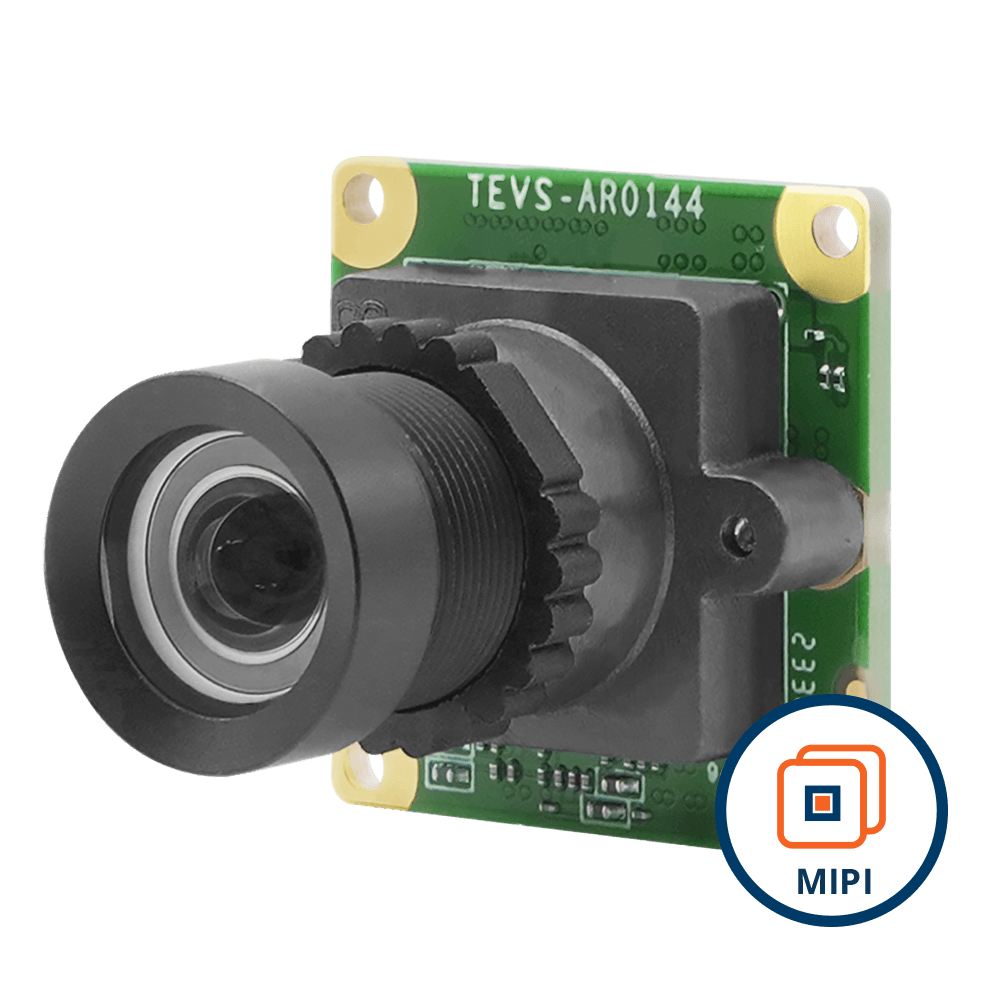Smartphones revolutionized the way in which we take pictures. We no longer must rely on professional photographers or expensive cameras to take quality images. Similarly, rapid developments in camera technology, artificial intelligence, and processing systems made it possible to use embedded cameras to capture high-quality images and videos in industrial, medical, and agricultural environments.
But what makes embedded camera applications interesting is the fact that a ‘one size fits all’ approach doesn’t work. Every embedded vision system has unique imaging and processing requirements which demand a camera handpicked for it.
Among the myriad of features to be considered while choosing a camera for your vision system, shutter type is one of the most critical. If we consider the method in which image data is read out, there are two types of shutters – global shutter and rolling shutter.
We will learn these and some of the related concepts in this article. But before we look at global shutter cameras in detail, we need to learn a fundamental camera concept called shutter and its types. Let us start from there in the next section.
What is a Camera Shutter?
A camera shutter is a mechanism in cameras that determines the duration for which light data is collected and read. This duration is called exposure time and is a critical parameter in deciding the quality of the output image.
Camera shutters come in two variants – mechanical shutters and electronic shutters.
Mechanical shutters use physical shutters (also called curtains) that open for the fixed exposure time to capture the light data of the scene. Electronic shutters, on the other hand, operate electronically wherein the information from the sensor is collected for the exposure time instead of using a curtain. While some of the modern consumer-end cameras (like DSLR) continue to use mechanical shutters, embedded cameras today mostly use electronic shutters.
What is Rolling Shutter vs. Global Shutter?
What is Rolling Shutter?
The rolling shutter mechanism works using sequential readout of sensor data. This means that the image data is exposed on a line-by-line basis (not at once). Each row is read out successively after being exposed. This is usually done to optimize the bandwidth consumption of the camera and the host. A majority of the camera modules used in today’s vision systems are rolling shutter based.
The above video demonstrates the working of a rolling shutter in a camera. The video shows a frame where each cell can be considered a pixel and each row is equivalent to a pixel row. As you can see, the data is read line by line from the top to the bottom of the frame.
Though the video is a very logical representation of how rolling shutter works, in reality, the exposure of one line starts much earlier than the end of the exposure of the previous line. But for simplicity, it is better to represent and comprehend the concept this way.
What is Global Shutter?
Different from the rolling shutter, the global shutter mechanism operates by exposing the entire sensor array at the same time, and then reading out the complete information of a frame as shown in the video above.
In the early days of embedded vision, only cameras with a mechanical shutter could function with a global shutter. Electronic shutter cameras were all based on rolling shutters. However, later global shutter found its way into electronic shutter cameras too owing to the evolving needs of modern vision-guided systems.
The Rolling Shutter Effect
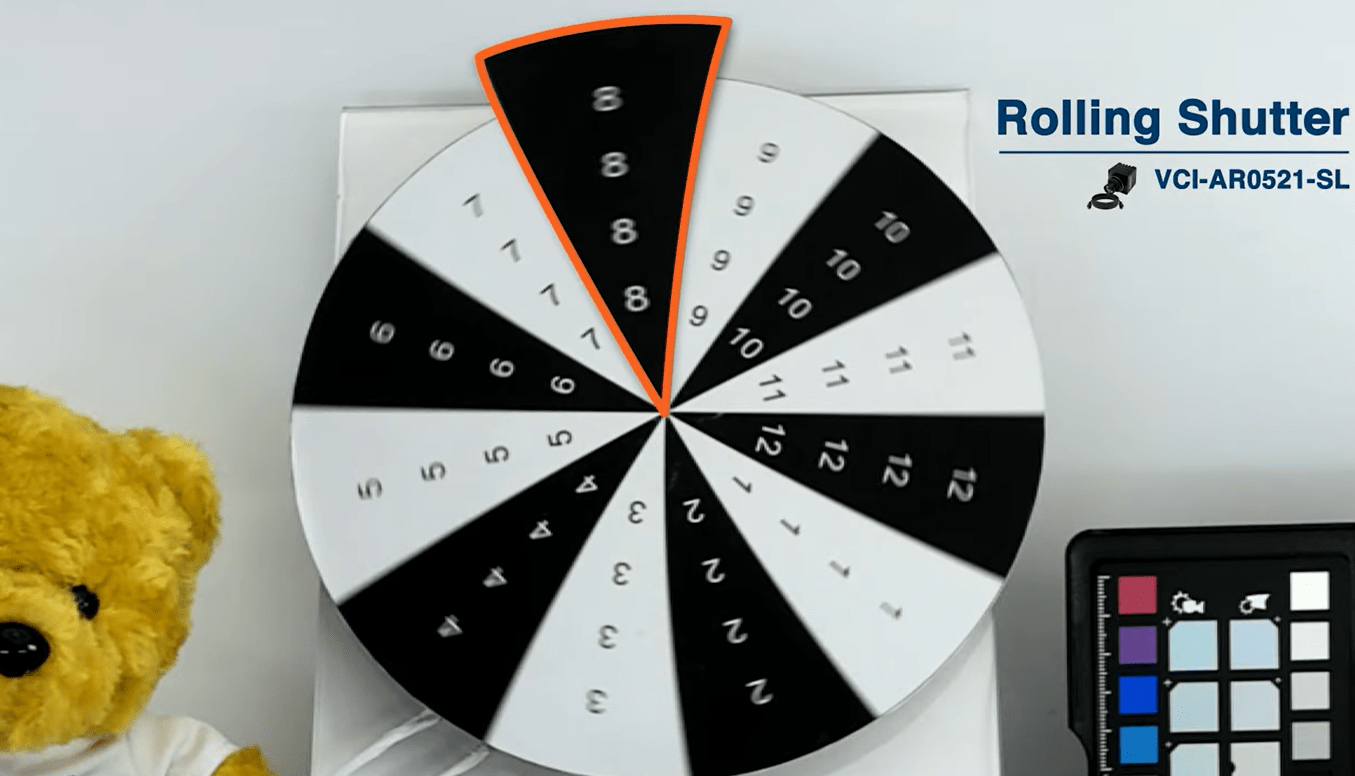
With what we have discussed so far, can you guess the main disadvantage of a rolling shutter camera?
While there isn’t much of a difference in the output image of a rolling shutter camera and a global shutter camera when you capture a static object or scene, when you capture the image or video of a fast-moving object, the output in a rolling shutter camera appears distorted in some cases. The reason for this is the readout mode.
Imagine a running cheetah. You don’t have much time to capture a still frame of a cheetah running since it moves so fast. In a rolling shutter camera, by the time the camera finishes reading the last pixel row, the cheetah would have moved so far that you don’t get a continuous image of a particular scene or frame. This phenomenon is called the rolling shutter effect. The deformations that occur due to this are called rolling shutter artifacts.
Similarly, if you try to capture a rotating fan, you will see the same phenomenon where the blades of the fan appear distorted. The rolling shutter effect is a common occurrence in imaging systems that capture rotating objects like fans, turbines, shafts, and other high-speed objects.
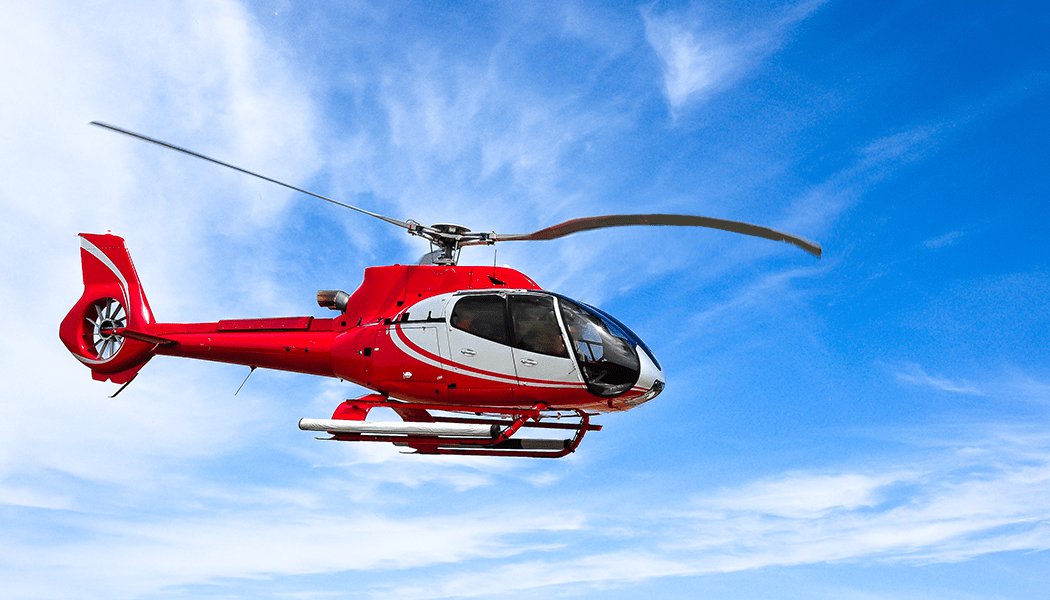
How to Eliminate Rolling Shutter Artifacts?
Dealing with the rolling shutter effect can at times be complicated. Depending on the nature of the object you need to capture, you might have to take several steps (not just one) to ensure you eliminate it.
The most common – and less expensive – approach is to increase the shutter speed of the camera. This does help to solve the problem to a great extent by capturing a frame in as little time as possible. This makes sure that the moving object is close to being stationary during image capture. The frame rate in such a case can go beyond 1000 fps.
However, it is observed that increasing the frame rate or reducing exposure time doesn’t eliminate shutter artifacts, especially when the target object (or camera position) moves so fast. In addition, decreasing exposure time beyond a threshold will lead to poor-quality images since you are not allowing enough light to be collected. This can be a huge problem for cameras that operate under inadequate lighting.
It is in such scenarios that you need to go for a global shutter camera.
What is a Global Shutter Camera?
Global shutter cameras use the global shutter mechanism to capture images and videos, thereby eliminating rolling shutter artifacts. Here are a few examples of global shutter sensors from some of the leading sensor manufacturers in the world:
- Onsemi: AR0144AT, AR0234CS , XGS 2000 – XGS 16000
- Sony: MX661-AAMR, IMX530-AAMJ, IMX531-AAQJ, IMX532-AAQJ
- OmniVision: OG0VE1B, OV9281, OV9282, OG0TB
Disadvantages of Global Shutter Cameras
Now that you understand the pros of a global shutter camera, you may ask – if global shutter cameras can be so effective in preventing shutter artifacts, why are they not used in every vision system?
The reason is quite simple – global shutter cameras can be far more expensive than rolling shutter cameras with comparable features. Using a global shutter camera in an application where the target objects are static or move only a little may be overkill. In some global shutter sensors there is buffering in the pixel which allows the sensor to be exposed (shutter open), then read out sequentially without sacrificing frame rate. This added buffering increases the cost and die complexity of the sensor. Yield loss and relative market size which decrease the economy of scale for the sensor may also be factors.
Also, given that the readout happens together, global shutter cameras have limitations when it comes to features like resolution or frame rate. Further, the likelihood of the output image having noise is also higher. So, unless you have a compelling requirement that drives the selection of a global shutter camera, your first choice should always be a rolling shutter camera.
Applications of Rolling Shutter Cameras

It is quite a tough task to comprehensively list all the applications of rolling shutter cameras.
They are suitable for very much every vision system except for a few (like where a global shutter camera is to be used for example).
What is to be noted here is that in addition to the shutter type, you need to consider various other parameters while choosing a camera for your system.
They include resolution, frame rate, chroma type, sensitivity, SNR (Signal to Noise Ratio), interface, dynamic range, host platform compatibility, etc. So, a lot more than the shutter type is involved in finding a camera solution.
For this discussion, let us list some popular applications where rolling shutter cameras are a good fit.
- Vending kiosks
- Access control systems
- Surveillance systems
- Vertical farming and precision agriculture
- Digital and fluorescence microscopy
- Autonomous shopping
- Smart lighting equipment
There are many more we could add. With new vision applications emerging every day, the list is going to be endless.
Applications of Global Shutter Cameras
Given the unique features of a global shutter camera, you might already be able to guess where it can be used.
Here are a few notable ones. We have also given a brief on how global shutter cameras help in these cases:
You need to note here that not every application under each umbrella category given below will need a global shutter camera. As mentioned earlier, every application is unique and requires a dedicated analysis before you choose the shutter type.
- Industrial inspection: Inspections involving the fast motion of the target object require global shutter cameras. Examples include conveyor belt monitoring and monitoring of turbines & shafts.
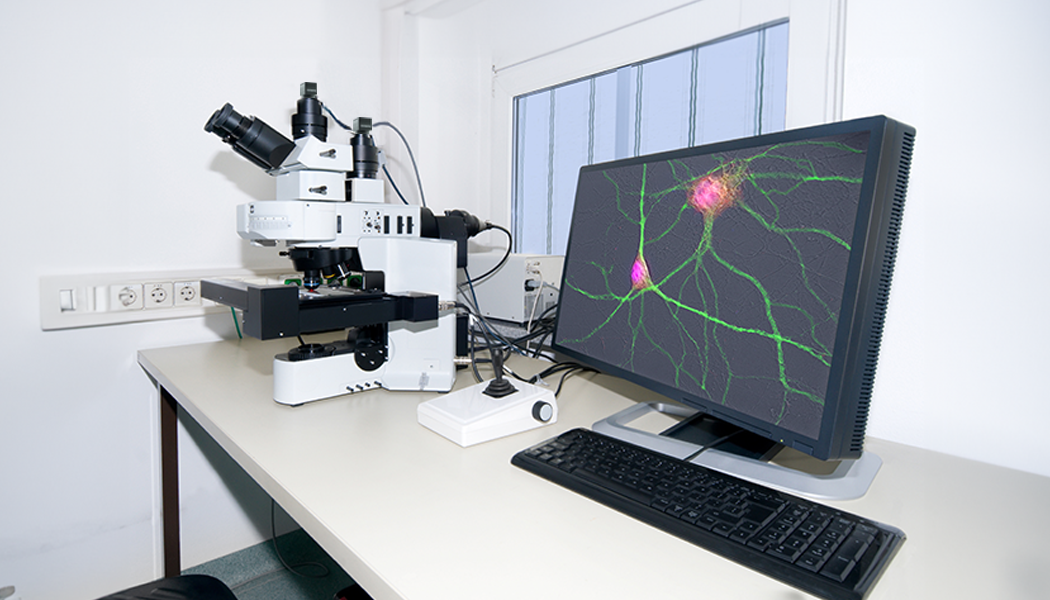
- Robotic arms: Robotic arms need global shutter cameras in two scenarios – when the arm itself is in motion and the objects it manipulates are moving fast.
- Airport baggage checking systems: Automated baggage checking systems need the camera to read barcodes as the objects are in motion. This demands a global shutter camera that can capture barcodes without the rolling shutter effect.
- Agricultural robots: Vehicles used in agriculture like weeding robots, harvesting robots, autonomous tractors, etc., move fast and the details of the output image are critical in doing analysis or determining the next action. So global shutter cameras are super helpful in these cases.
- Drones: Drones used for inventory tracking, measuring NDVI (Normalized Difference Vegetation Index), or even delivery would find global shutter cameras to be a good fit.
- Microscopy: Cells in blood and certain other bodily substances are in constant motion when the organism is alive. To capture them, a rolling shutter camera with a high frame rate might not suffice, and a global shutter will have to be used.
Start Your Camera Integration Journey With TechNexion
One of the things that set TechNexion apart is our experience in the embedded systems space. In addition to selling cameras, we also offer system-on modules, embedded computing & panel computing modules, cloud & connectivity solutions, and dedicated robotics solutions. This enables us to understand the complete ecosystem and how different embedded devices interact with each other. This in turn helps us to optimize our cameras for maximum performance.
If you are currently working on building an embedded vision system, our consultants might be of help to you.
Related Products
- What is a Camera Shutter?
- What is Rolling Shutter vs. Global Shutter?
- What is Rolling Shutter?
- What is Global Shutter?
- The Rolling Shutter Effect
- How to Eliminate Rolling Shutter Artifacts?
- What is a Global Shutter Camera?
- Disadvantages of Global Shutter Cameras
- Applications of Rolling Shutter Cameras
- Applications of Global Shutter Cameras
- Start Your Camera Integration Journey With TechNexion
- Related Products
Get a Quote
Fill out the details below and one of our representatives will contact you shortly.

